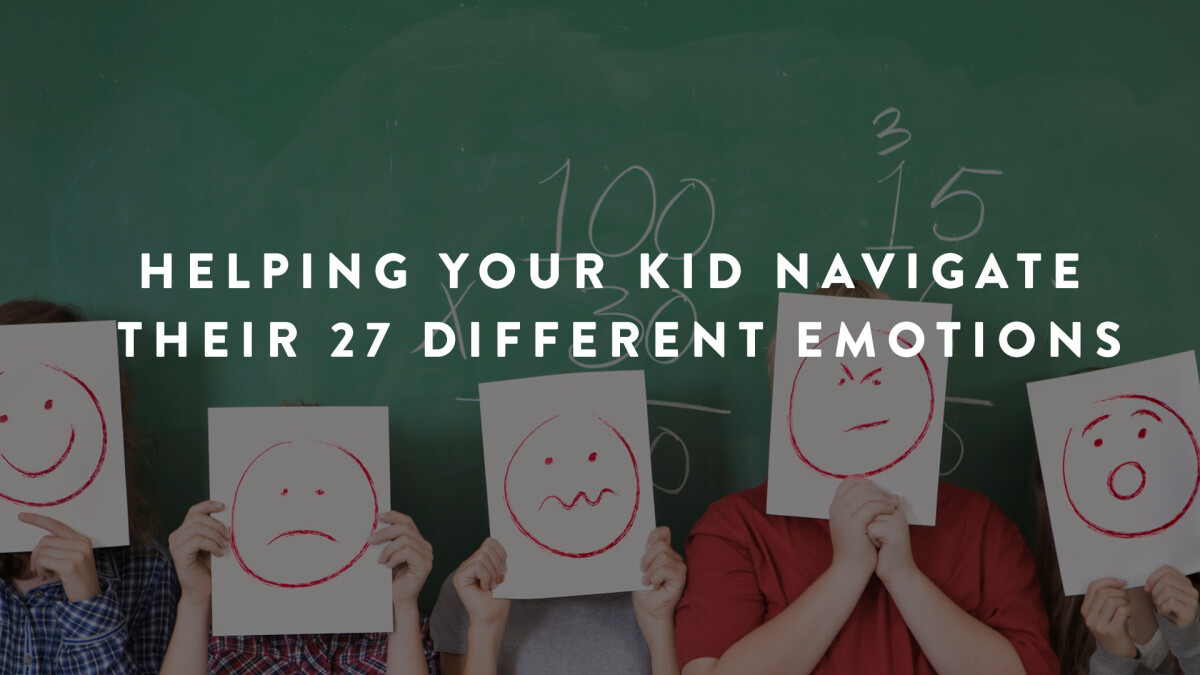
This article was written by Holly Crawshaw and was originally posted here.
Have you ever found yourself in tears for no real reason? Or have you ever been so frustrated that you wanted to throw something? (Maybe you even did!) Or have you ever woken up one morning with an overwhelming sense of anxiety but couldn’t quite pinpoint what exactly you’re so worried about?
27 Different Emotions
Studies say that we have at least twenty-seven different, distinct emotions. Twenty-seven. Maybe that surprises you. Maybe you’re a fairly even-tempered, steady person who doesn’t experience super high highs or super low lows. Or, maybe you believe that stat because you’ve lived it. Maybe you’ve had twenty-seven emotions since you woke up today.
Either way, the fact is that humans are capable of feeling a lot. A lot quantity-wise and a lot depth-wise.
Have you ever stopped to think about how your kid is (or isn’t) navigating their twenty-seven emotions? Imagine being six years old and waking up with an uneasy feeling in your tummy and not really knowing what it’s all about. You don’t even know the word anxiety—much less the source of your discomfort.
That’s the situation some of our kids find themselves in—experiencing a wide range of emotions and not having the context, life-experience, or even the language to talk about them.
There are a few simple steps you can take as a parent to help them navigate their variety of emotions and process what they’re feeling.
1. First, Recognize the moment.
Whether or not your kid expresses their emotions openly, they’re definitely experiencing them. If you have a more reserved child, knowing when they’re feeling emotional may require you to observe changes in their behavior. Are they more quiet than normal? Have less of an appetite? Are they sleeping significantly more or less? Be a student of your kid and keep a pulse on when they’re not quite themselves.
2. Then, Remove them from the source.
Tell your kid that it’s okay to respectfully walk away from a situation or person before they take action on how they’re feeling. Give them permission to go into the other room and scream into a pillow. Walking away helps them take control of their emotions.
3. Next, Tell them to breathe.
It is scientifically proven that you will be incapable of thinking until you get blood and air back to certain parts of your brain once the adrenaline of a particularly emotional moment moves it elsewhere. Tell your kid to take deep breaths in and out until they seem calmer or more stable.
4. Then, Help them name it.
You can’t manage your emotions if you don’t know what you actually feel. Create a feelings chart so they can easily and visually determine what they’re feeling. Or, if they already know how they’re feeling, give them a sliding scale to rate it. For example, How angry are you? From “a little mad” to “ready to scream your head off”? Or, Are you more sad or less sad than that time it rained out your birthday party?
It may seem silly, but giving them context for what they’re feeling will help your kid weigh and process the levity of their current emotional state.
5. Finally, Refocus.
Give them a next step in addressing their emotion. If they’re bummed about failing their math test, suggest the two of you sit down and look at the incorrect responses to see where they went wrong. If they’re mad that their sister got a playdate and they didn’t, get out the family calendar and make a suggestion for the next time they get to have a friend over. Don’t solve their problem—just redirect their focus.
The most important thing you can do when it comes to helping kids navigate their emotions is to communicate that all emotions—even ones that make us uncomfortable are okay. There is no “bad” or “wrong” way to feel—only unwise or hurtful ways to respond.
Reassure them that what they’re feeling is temporary, but that the way you feel about them will never, ever change.
